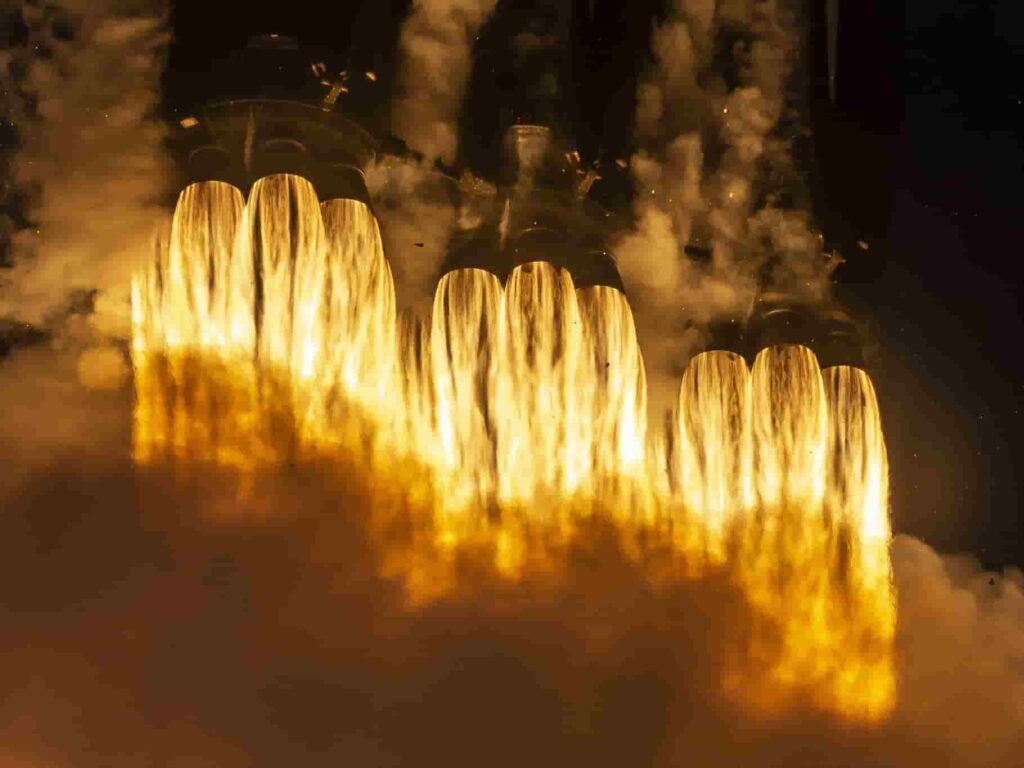SpaceX’s Starship test flight setback: Lost contact during descent. Implications for lunar missions

The recent test flight of SpaceX’s Starship, the mega rocket designed for ambitious missions including lunar landings and Mars exploration, ended in a setback as the spacecraft lost contact during its descent back to Earth. This event marked SpaceX’s third attempt to conduct a successful test flight of the Starship, and while it showed progress, it also highlighted the challenges and complexities of space exploration.
The test flight was conducted near the southern tip of Texas, close to the Mexican border, and it initially appeared to be going well. The Starship, standing nearly 400 feet tall, took off smoothly and headed east over the Gulf of Mexico. This flight was crucial for SpaceX as previous test flights had ended in explosions shortly after liftoff. Surviving for close to 50 minutes during this flight was a significant achievement, signaling progress compared to the earlier unsuccessful attempts.
Also Read:- Legal Turmoil: Andrew Tate Faces Extradition and Dual Legal Battles in UK and Romania
The separation of the booster from the spacecraft occurred as planned, and the booster descended into the Gulf of Mexico. However, an issue with one of the entry engines caused a deviation from the intended trajectory. Despite this hiccup, the spacecraft continued its journey towards the east, flying without any crew or payloads onboard.
As the Starship soared across the Atlantic and South Africa, reaching an altitude of about 145 miles, it was a moment of anticipation for SpaceX and the space industry at large. The successful completion of this test flight could pave the way for future missions, including crewed lunar landings as part of NASA’s Artemis program.
However, 49 minutes into the flight, just 15 minutes before the expected splashdown in the Indian Ocean, communication with the spacecraft was lost. At an altitude of 40 miles and a speed of around 16,000 mph, the Starship presumably broke apart, ending the test flight prematurely.
Also Read:- TikTok Ban Debate: Trump’s Reversal
Despite this setback, SpaceX CEO Elon Musk expressed appreciation for the progress made during the flight. His acknowledgment of the team’s efforts underscored the company’s commitment to pushing the boundaries of space exploration and advancing technology.
NASA, a key partner for SpaceX in its space endeavors, closely monitored the test flight. The success of the Starship is crucial for NASA’s plans to return astronauts to the moon and establish a sustainable presence there. The Artemis program aims to achieve this milestone within the next few years, using the Starship as a key component for lunar landings.
While setbacks like the recent test flight loss are part of the iterative process of space exploration, they also provide valuable insights and opportunities for improvement. SpaceX will undoubtedly analyze the data from this flight to identify the root causes of the communication loss and make necessary adjustments for future flights.
Also Read:- Global Tribute to the Flat White: Google Doodle Celebrates the Espresso Elegance
The Starship’s ultimate goal goes beyond lunar missions; it is envisioned as a vehicle that will enable human exploration of Mars. Elon Musk’s vision for interplanetary travel includes using the Starship to transport humans to the red planet and establish a sustainable settlement there, making humanity a multiplanetary species.
In the near term, SpaceX plans to utilize the Starship for launching satellites, including the company’s Starlink internet constellation. Crewed missions to orbit will follow, showcasing the capabilities of this advanced spacecraft. Eventually, private citizens may have the opportunity to embark on journeys around the moon and beyond, fulfilling Musk’s vision of making space travel accessible to everyone.
Despite the setback in the recent test flight, the journey towards space exploration continues, fueled by innovation, determination, and the pursuit of pushing the boundaries of what’s possible in the cosmos.
